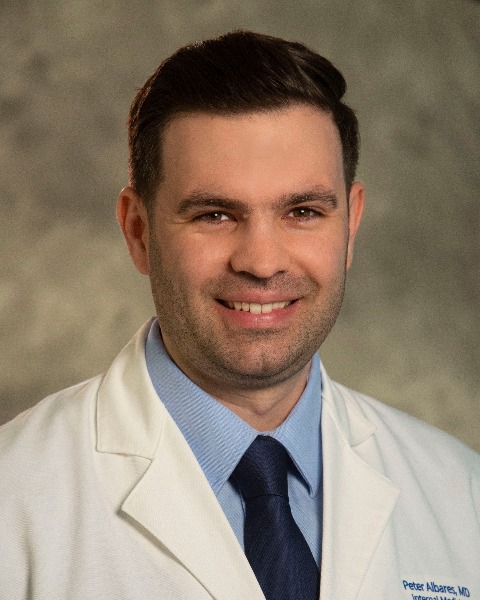Sunday Poster Session
Category: Interventional Endoscopy
P1414 - Endoscopic Management of Enterocutaneous Fistulas: A Quaternary Center Experience
Sunday, October 26, 2025
3:30 PM - 7:00 PM PDT
Location: Exhibit Hall

Peter B. Albares, MD
Duke University Hospital
Durham, NC
Presenting Author(s)
Peter Albares, MD1, Luderve Rosier, MD2, Alice Parish, MSPH2, Donna Niedzwiecki, PhD2, Alyson M. Johnson, MD3
1Duke University Hospital, Durham, NC; 2Duke University Medical Center, Durham, NC; 3Duke University Health System, Cary, NC
Introduction: Enterocutaneous fistulas (ECF) are abnormal connections between the gastrointestinal tract and the skin that can lead to significant morbidity due to sepsis, malnutrition, and fluid and electrolyte imbalances. Most ECFs arise from surgery, trauma, malignancy, or inflammatory bowel disease and mortality estimates range between 6% to 33%. Regardless of etiology, patients with ECFs that do not resolve spontaneously often require multiple interventions to achieve closure. While persistent ECFs have traditionally been managed surgically, minimally invasive endoscopic techniques are an emerging alternative. This study aims to analyze the technical success of endoscopic management of ECFs and describe the patient and clinical factors associated with definitive endoscopic closure at a quaternary referral center.
Methods: Using data extracted from electronic health records, we performed a retrospective analysis of adult patients with enterocutaneous fistulas (excluding those with inflammatory bowel disease) who underwent endoscopic intervention between 1/1/2020 and 8/1/2023. Successful ECF closure was defined as the absence of a fistulous track at follow-up endoscopy or physical exam. We examined the association between successful closure and factors such as patient demographics, ECF origin site, number of interventions, and endoscopic therapy employed, reporting odds ratios and 95% confidence intervals.
Results: Of the 38 patients who met inclusion criteria, the overall endoscopic ECF closure success rate was about 63% (n=24), with 63% of those patients (n=15) achieving closure after a single endoscopic intervention. Most patients had simple fistulas (68%; n=26) from a gastric origin (76%; n=29). No significant association was found between the odds of closure success and patient or clinical factors such as sex, race, nutritional status, or number of fistulous tracts. Over-the-scope clips were the most frequently used device (45%; n=17) with APC being the most frequent adjunctive technique used to aid in fistula closure (74%; n =28).
Discussion: The overall endoscopic closure rate for ECFs within our institution is 65%, which falls within the range of outcomes reported elsewhere. These findings contribute to the growing body of evidence supporting the role of endoscopic therapy in managing ECFs, particularly for poor surgical candidates, and highlight the need for prospective comparative studies.
Disclosures:
Peter Albares indicated no relevant financial relationships.
Luderve Rosier indicated no relevant financial relationships.
Alice Parish indicated no relevant financial relationships.
Donna Niedzwiecki indicated no relevant financial relationships.
Alyson Johnson indicated no relevant financial relationships.
Peter Albares, MD1, Luderve Rosier, MD2, Alice Parish, MSPH2, Donna Niedzwiecki, PhD2, Alyson M. Johnson, MD3. P1414 - Endoscopic Management of Enterocutaneous Fistulas: A Quaternary Center Experience, ACG 2025 Annual Scientific Meeting Abstracts. Phoenix, AZ: American College of Gastroenterology.
1Duke University Hospital, Durham, NC; 2Duke University Medical Center, Durham, NC; 3Duke University Health System, Cary, NC
Introduction: Enterocutaneous fistulas (ECF) are abnormal connections between the gastrointestinal tract and the skin that can lead to significant morbidity due to sepsis, malnutrition, and fluid and electrolyte imbalances. Most ECFs arise from surgery, trauma, malignancy, or inflammatory bowel disease and mortality estimates range between 6% to 33%. Regardless of etiology, patients with ECFs that do not resolve spontaneously often require multiple interventions to achieve closure. While persistent ECFs have traditionally been managed surgically, minimally invasive endoscopic techniques are an emerging alternative. This study aims to analyze the technical success of endoscopic management of ECFs and describe the patient and clinical factors associated with definitive endoscopic closure at a quaternary referral center.
Methods: Using data extracted from electronic health records, we performed a retrospective analysis of adult patients with enterocutaneous fistulas (excluding those with inflammatory bowel disease) who underwent endoscopic intervention between 1/1/2020 and 8/1/2023. Successful ECF closure was defined as the absence of a fistulous track at follow-up endoscopy or physical exam. We examined the association between successful closure and factors such as patient demographics, ECF origin site, number of interventions, and endoscopic therapy employed, reporting odds ratios and 95% confidence intervals.
Results: Of the 38 patients who met inclusion criteria, the overall endoscopic ECF closure success rate was about 63% (n=24), with 63% of those patients (n=15) achieving closure after a single endoscopic intervention. Most patients had simple fistulas (68%; n=26) from a gastric origin (76%; n=29). No significant association was found between the odds of closure success and patient or clinical factors such as sex, race, nutritional status, or number of fistulous tracts. Over-the-scope clips were the most frequently used device (45%; n=17) with APC being the most frequent adjunctive technique used to aid in fistula closure (74%; n =28).
Discussion: The overall endoscopic closure rate for ECFs within our institution is 65%, which falls within the range of outcomes reported elsewhere. These findings contribute to the growing body of evidence supporting the role of endoscopic therapy in managing ECFs, particularly for poor surgical candidates, and highlight the need for prospective comparative studies.
Disclosures:
Peter Albares indicated no relevant financial relationships.
Luderve Rosier indicated no relevant financial relationships.
Alice Parish indicated no relevant financial relationships.
Donna Niedzwiecki indicated no relevant financial relationships.
Alyson Johnson indicated no relevant financial relationships.
Peter Albares, MD1, Luderve Rosier, MD2, Alice Parish, MSPH2, Donna Niedzwiecki, PhD2, Alyson M. Johnson, MD3. P1414 - Endoscopic Management of Enterocutaneous Fistulas: A Quaternary Center Experience, ACG 2025 Annual Scientific Meeting Abstracts. Phoenix, AZ: American College of Gastroenterology.
